
Vampire literature covers the spectrum of literary work concerned principally with the subject of vampires. The literary vampire first appeared in 18th-century poetry, before becoming one of the stock figures of gothic fiction with the publication of Polidori's The Vampyre (1819), which was inspired by the life and legend of Lord Byron. Later influential works include the penny dreadful Varney the Vampire (1847); Sheridan Le Fanu's tale of a lesbian vampire, Carmilla (1872), and the most well known: Bram Stoker's Dracula (1897). Some authors created a more "sympathetic vampire", with Varney being the first, and Anne Rice's 1976 novel Interview with the Vampire as a more recent example.
Anita Blake: Vampire Hunter is a series of urban fantasy novels, short stories, and comic books by Laurell K. Hamilton. The books have sold more than six million copies; many have made The New York Times Best Seller list.

Blade is a fictional character appearing in American comic books published by Marvel Comics. Created by writer Marv Wolfman and penciller Gene Colan, his first appearance was in the comic book The Tomb of Dracula #10 as a supporting character, but later went on to star in his own storylines. Devoting his life to ridding the world of all vampires, Blade utilizes his unique physiology to become the perfect vampire hunter; while originally depicted as a human immune to vampire bites, Blade was retroactively established to be a dhampir following his adaptation as such in Spider-Man: The Animated Series and the Blade film series. He is the father of Brielle "Bri" Brooks / Bloodline.

The Tomb of Dracula is an American horror comic book series published by Marvel Comics from April 1972 to August 1979. The 70-issue series featured a group of vampire hunters who fought Count Dracula and other supernatural menaces. On rare occasions, Dracula would work with these vampire hunters against a common threat or battle other supernatural threats on his own, but more often than not, he was the antagonist rather than protagonist. In addition to his supernatural battles in this series, Marvel's Dracula often served as a supervillain to other characters in the Marvel Universe, battling the likes of Blade the Vampire Slayer, Spider-Man, the Werewolf, the X-Men, Howard the Duck, and the licensed Robert E. Howard character Solomon Kane.
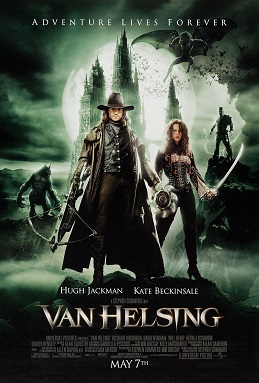
Van Helsing is a 2004 action horror film written and directed by Stephen Sommers. It stars Hugh Jackman as Dutch monster hunter Van Helsing, and Kate Beckinsale as Anna Valerious. Van Helsing is both a homage and tribute to the Universal Horror Monster films from the 1930s and 1940s, of which Sommers is a fan.
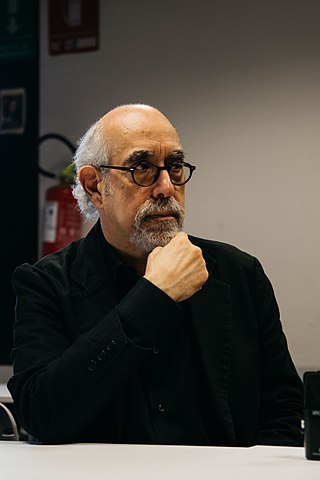
John Marc DeMatteis is an American writer of comic books, television and novels.

Vampire Hunter D is a series of novels written by Japanese author Hideyuki Kikuchi and illustrated by Yoshitaka Amano since 1983.
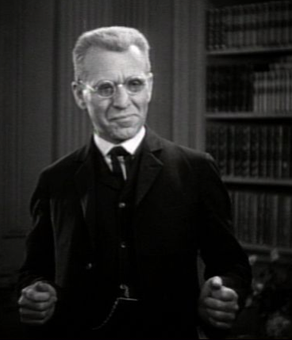
Professor Abraham Van Helsing, a fictional character from the 1897 gothic horror novel Dracula, is an aged Dutch polymath doctor with a wide range of interests and accomplishments, partly attested by the string of letters that follows his name: "MD, D.Ph., D.Litt., etc.", indicating a wealth of experience, education and expertise. He is a doctor, professor, lawyer, philosopher, scientist and metaphysic. The character is best known through many adaptations of the story as a vampire slayer, monster hunter and the archnemesis of Count Dracula, and the prototypical and the archetypical parapsychologist in subsequent works of paranormal fiction.

Morbius the Living Vampire, real name Michael Morbius, M.D., Ph.D., is a fictional character appearing in American comic books published by Marvel Comics. Created by writer Roy Thomas and originally designed by penciler Gil Kane, he debuted as a tragic, sympathetic adversary of the superhero Spider-Man in The Amazing Spider-Man #101. For years, Morbius frequently clashed with Spider-Man and other superheroes while occasionally regaining his reason and helping those he regarded as allies. The 1992 Marvel Comics "Rise of the Midnight Sons" crossover event then revived and revised several horror-themed Marvel characters in order to present them as lead protagonists in new titles. The event launched the new series Morbius the Living Vampire, which ran from 1992 to 1995 and now presented the title character as a lethal anti-hero and vigilante. After the cancellation of this series, various stories shifted back and forth between portraying Morbius as a conflicted and brutal anti-hero or a tragic character subject to episodes of madness and murder.

World War 3 Illustrated is an American comics anthology magazine with a left-wing political focus, founded in 1979 by New York City comic book artists Peter Kuper and Seth Tobocman, and painter Christof Kohlhofer, and subsequently produced by a collective with a rotating editorship.

Vampires are frequently represented in popular culture, including appearances in ballet, films, literature, music, opera, theatre, paintings, and video games.
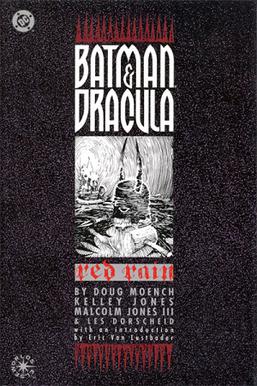
The Batman & Dracula trilogy consists of three American graphic novels—Batman & Dracula: Red Rain (1991), Bloodstorm (1994), and Crimson Mist (1998)—written by Doug Moench and penciled by Kelley Jones. The books were published by DC Comics as a part of its Elseworlds line of comics. Moench created the concept for the first installment and convinced Jones, of whom he was a fan, to join the project. Red Rain's eventual popularity resulted in DC commissioning sequels.

Weird West is a term used for the hybrid genres of fantasy Western, horror Western and science fiction Western. The term originated with DC's Weird Western Tales in 1972, but the idea is older as the genres have been blended since the 1930s, possibly earlier, in B-movie Westerns, comic books, movie serials and pulp magazines. Individually, the hybrid genres combine elements of the Western genre with those of fantasy, horror and science fiction respectively.

Occult detective fiction is a subgenre of detective fiction that combines the tropes of the main genre with those of supernatural, fantasy and/or horror fiction. Unlike the traditional detective who investigates murder and other common crimes, the occult detective is employed in cases involving ghosts, demons, curses, magic, vampires, undead, monsters and other supernatural elements. Some occult detectives are portrayed as being psychic or in possession of other paranormal or magical powers.
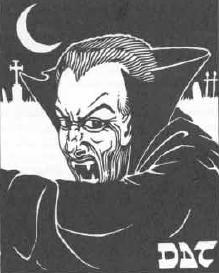
In the Dungeons & Dragons fantasy role-playing game, a vampire is an undead creature. A humanoid or monstrous humanoid creature can become a vampire, and looks as it did in life, with pale skin, haunting red eyes, and a feral cast to its features. A new vampire is created when another vampire drains the life out of a living creature. Its depiction is related to those in the 1930s and 1940s Hollywood Dracula and monster movies. In writing vampires into the game, as with other creatures arising in folklore, the authors had to consider what elements arising in more recent popular culture should be incorporated into their description and characteristics.

Sandy Jimenez is an American comic book artist, writer and director, most commonly associated with the New York city independent comic book scene of the 1990s, with work appearing in magazines such as Inner City Press and World War 3 Illustrated.
Monsters Unleashed is the title of an American black-and-white comics magazine published by Magazine Management and two color comic-book miniseries from Marvel Comics. The first ran from 1973 to 1975. The two miniseries ran consecutively in 2017.
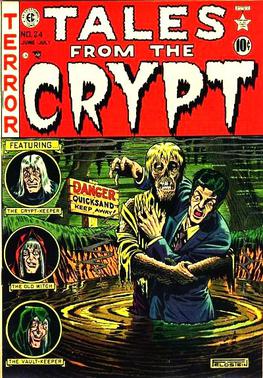
Horror comics are comic books, graphic novels, black-and-white comics magazines, and manga focusing on horror fiction. In the US market, horror comic books reached a peak in the late 1940s through the mid-1950s, when concern over content and the imposition of the self-censorship Comics Code Authority contributed to the demise of many titles and the toning down of others. Black-and-white horror-comics magazines, which did not fall under the Code, flourished from the mid-1960s through the early 1980s from a variety of publishers. Mainstream American color comic books experienced a horror resurgence in the 1970s, following a loosening of the Code. While the genre has had greater and lesser periods of popularity, it occupies a firm niche in comics as of the 2010s.

Hulk: Where Monsters Dwell is a 2016 American direct-to-video animated superhero film featuring the superhero character Hulk. The movie takes its name from a 1970s Marvel comic book title. Just like Marvel Super Hero Adventures: Frost Fight!, this film is set within the same continuity as Avengers Assemble and second film in the Marvel Animated Universe.















